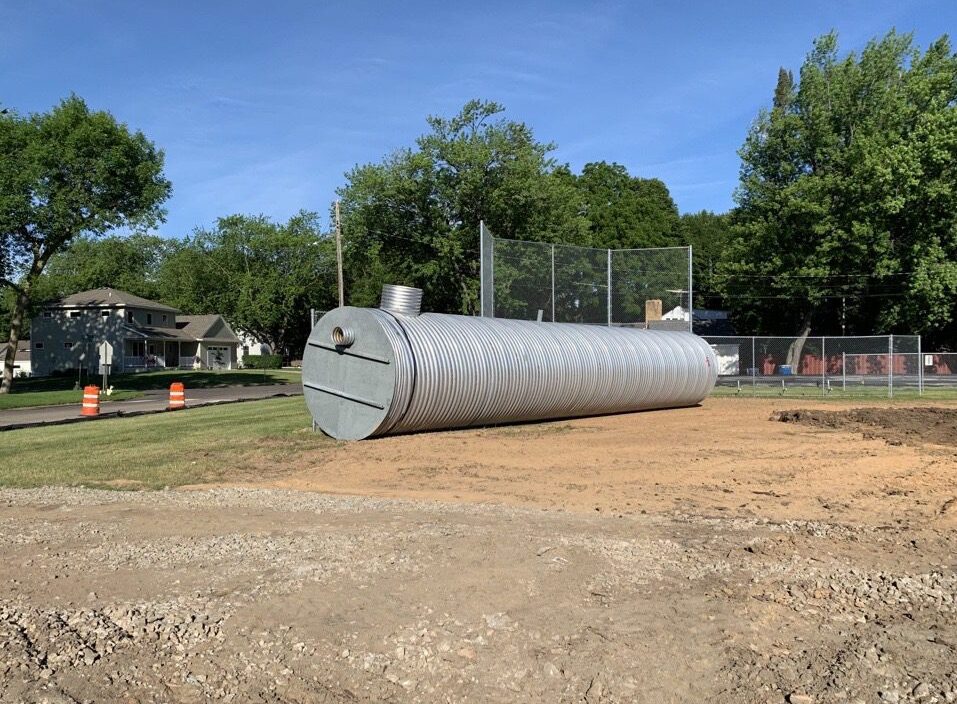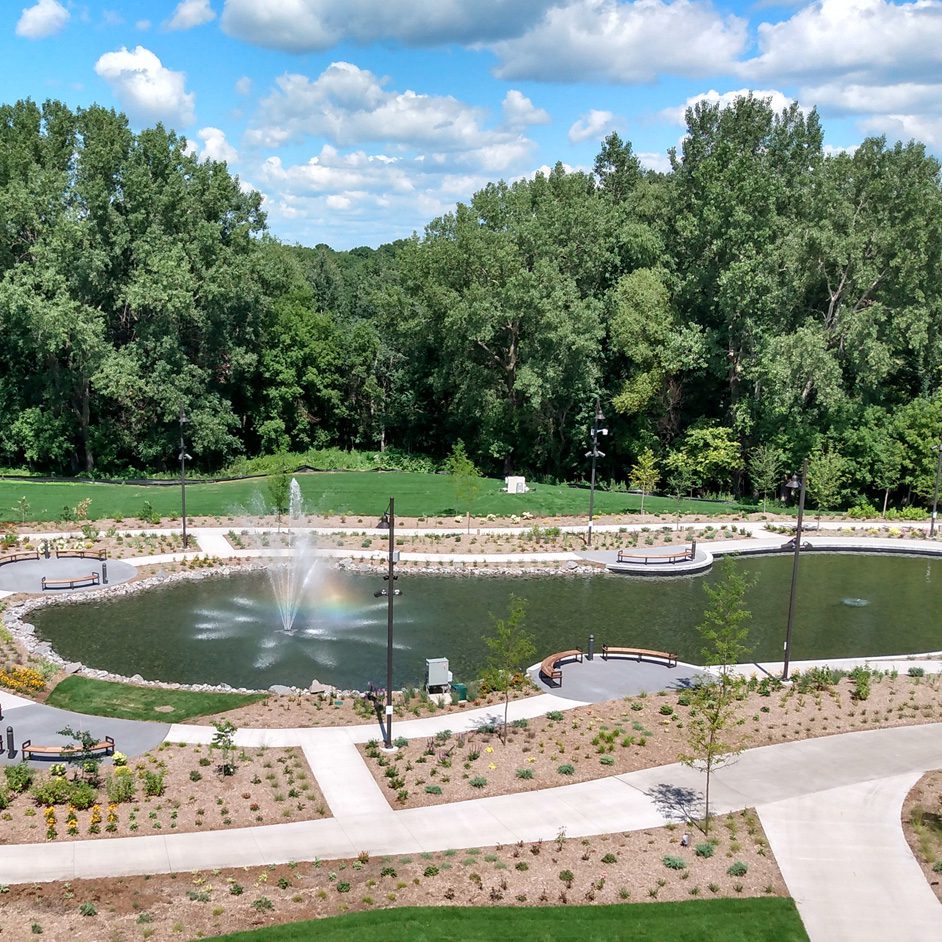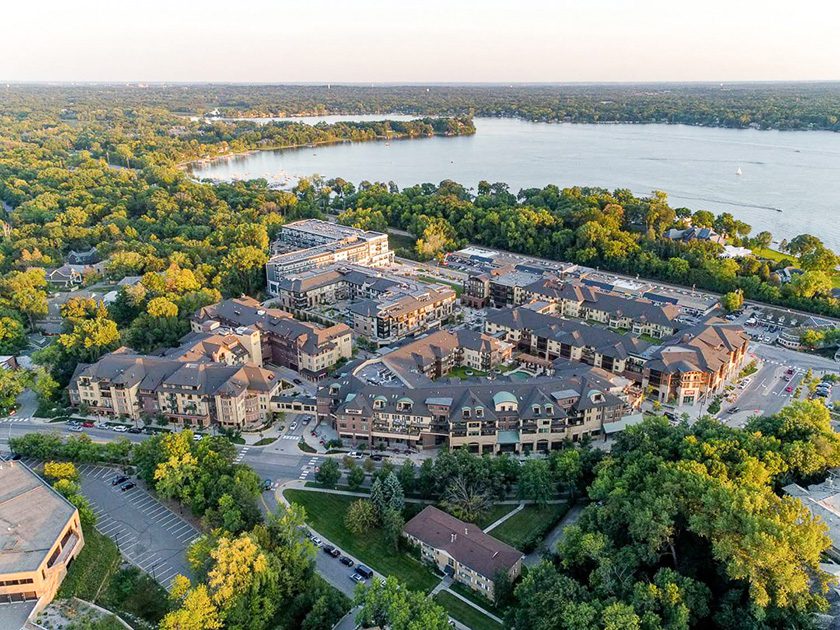
Dealing with stormwater on a site can be a challenge—and an opportunity.
Runoff from roofs, parking lots, and other hard surfaces can be substantial after a prolonged rain or sudden storm, and the site and its surroundings may be damaged if water runoff isn’t handled and treated appropriately. In Minnesota and many other states, regulations established by state and local authorities limit the rate and volume of water that can flow from a site. Surges in runoff can significantly reshape and even ruin downstream water and environments.
Sustainability-minded clients are often interested in reuse: Can stormwater be filtered, treated, and reused for irrigation? For flushing toilets? Drinking? With a system that is carefully calibrated and designed correctly, all of these are possible. Here are three examples from LHB’s portfolio:
Irrigation: Allianz Field, St. Paul
Completed in 2019, Allianz Field is home to the Minnesota Loons soccer team. Rainwater—up to 2 million gallons collected annually—is the primary source for irrigating the pitch within the stadium as well as the seven acres of grass, plantings, and trees that surround the structure. The runoff collected from the canopy and interior is stored in a massive underground tank located outside the structure and treated with a state-of-the-art filtration system. (LHB designed the treatment system.) Only a small portion of rainfall on the site is diverted to storm sewers, reducing the potential for downstream water contamination and wear and tear on city infrastructure.

Graywater: Scheels, Eden Prairie
The Eden Prairie Center shopping mall lies within the Riley Purgatory Bluff Creek Watershed District, which is governed by a set of strict regulatory requirements. Because of site and soil conditions, infiltration was not an option across the whole property when sporting-goods retailer Scheels decided to construct a 250,000-square-foot addition, plus parking, on the mall site. So the owner settled on a reuse option, designed by LHB. Up to 50,000 gallons of water collected from the rooftop is stored in an underground tank before it’s put through a filtration skid and treated with UV light to remove particles and pathogens. Pumped into a day tank, the water can be used for irrigation or graywater.

Irrigation & Education: Richardson Elementary, North St. Paul
Leveraging a grant from the Ramsey-Washington Metro watershed district, Richardson Elementary was able to build a sophisticated stormwater treatment system that not only filters and conserves onsite stormwater for irrigation but also serves as an educational tool for teachers. The system, designed by LHB, goes well beyond the regulatory requirements mandated by the watershed district. Many features were left viewable or made accessible (the lids to wet wells can be opened, for example), so students can learn about stormwater engineering and water reuse.

Drinking Water from Stormwater: The Future
Can stormwater be reused for drinking? Yes. But the costs of filtering out the dirt, pollen, and other contaminants that exist even in fairly clean graywater tend to outweigh the returns. Will buildings someday be fitted with taps that gush with reused stormwater? Quite possibly.
Want to explore stormwater reuse options on your site? Contact one of LHB’s civil engineers today!
Additional Resources


